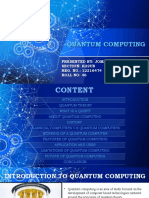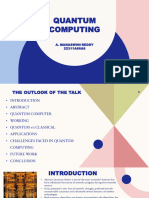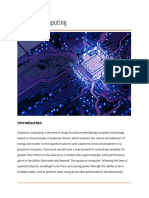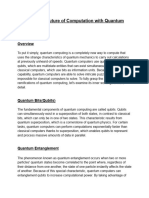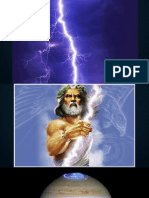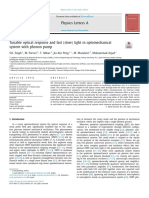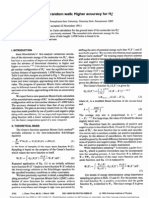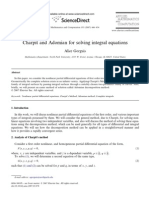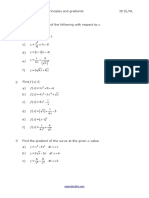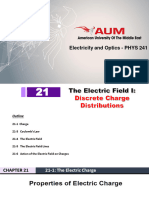0% found this document useful (0 votes)
145 views14 pagesQA Report
This document is a technical seminar report submitted by Dileep Thoti for approval on the topic of quantum computing. It provides an introduction to quantum computing, discussing its history and how it works using quantum bits that can represent 1s and 0s simultaneously. The key advantages of quantum computing are its ability to perform complex calculations exponentially faster than classical computers using principles of quantum mechanics like superposition and entanglement. Potential applications of quantum computing include areas like artificial intelligence, cybersecurity, drug discovery, and materials science.
Uploaded by
Projects BucketCopyright
© © All Rights Reserved
We take content rights seriously. If you suspect this is your content, claim it here.
Available Formats
Download as PDF, TXT or read online on Scribd
0% found this document useful (0 votes)
145 views14 pagesQA Report
This document is a technical seminar report submitted by Dileep Thoti for approval on the topic of quantum computing. It provides an introduction to quantum computing, discussing its history and how it works using quantum bits that can represent 1s and 0s simultaneously. The key advantages of quantum computing are its ability to perform complex calculations exponentially faster than classical computers using principles of quantum mechanics like superposition and entanglement. Potential applications of quantum computing include areas like artificial intelligence, cybersecurity, drug discovery, and materials science.
Uploaded by
Projects BucketCopyright
© © All Rights Reserved
We take content rights seriously. If you suspect this is your content, claim it here.
Available Formats
Download as PDF, TXT or read online on Scribd
/ 14





